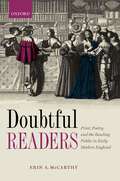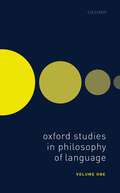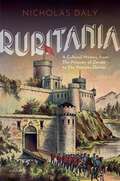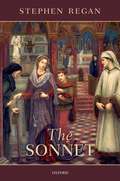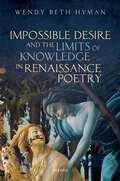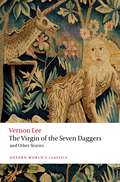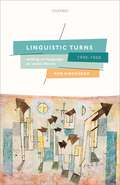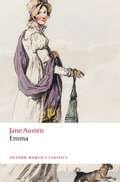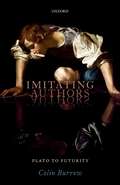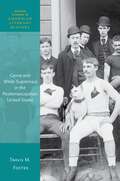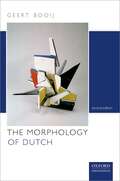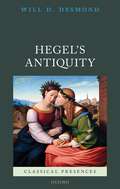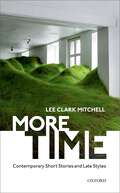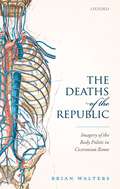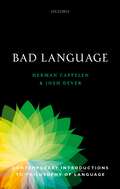- Table View
- List View
Doubtful Readers: Print, Poetry, and the Reading Public in Early Modern England
by Erin A. McCarthyWhen poetry was printed, poets and their publishers could no longer take for granted that readers would have the necessary knowledge and skill to read it well. By making poems available to anyone who either had the means to a buy a book or knew someone who did, print publication radically expanded the early modern reading public. These new readers, publishers feared, might not buy or like the books. Worse, their misreadings could put the authors, the publishers, or the readers themselves at risk. Doubtful Readers: Print, Poetry, and the Reading Public in Early Modern England focuses on early modern publishers' efforts to identify and accommodate new readers of verse that had previously been restricted to particular social networks in manuscript. Focusing on the period between the maturing of the market for printed English literature in the 1590s and the emergence of the professional poet following the Restoration, this study shows that poetry was shaped by—and itself shaped—strong print publication traditions. By reading printed editions of poems by William Shakespeare, Aemilia Lanyer, John Donne, and others, this book shows how publishers negotiated genre, gender, social access, reputation, literary knowledge, and the value of English literature itself. It uses literary, historical, bibliographical, and quantitative evidence to show how publishers' strategies changed over time. Ultimately, Doubtful Readers argues that although—or perhaps because—publishers' interpretive and editorial efforts are often elided in studies of early modern poetry, their interventions have had an enduring impact on our canons, texts, and literary histories.
Oxford Studies in Philosophy of Language Volume 1 (Oxford Studies in Philosophy of Language #1)
Philosophy of language has been at the center of philosophical research at least since the start of the 20th century. Since that 'linguistic turn' much of the most important work in philosophy has related to language. But till now there has been no regular forum for outstanding original work in this area. That is what Oxford Studies in Philosophy of Language offers. Anyone wanting to know what's happening in philosophy of language could start with these volumes.
Ruritania: A Cultural History, from The Prisoner of Zenda to the Princess Diaries
by Nicholas DalyThis is a book about the long cultural shadow cast by a single bestselling novel, Anthony Hope's The Prisoner of Zenda (1894), which introduced Ruritania, a colourful pocket kingdom. In this swashbuckling tale, Englishman Rudolf Rassendyll impersonates the king of Ruritania to foil a coup, but faces a dilemma when he falls for the lovely Princess Flavia. Hope's novel inspired stage and screen adaptations, place names, and even a board game, but it also launched a whole new subgenre, the "Ruritanian romance". The new form offered swordplay, royal romance, and splendid uniforms and gowns in such settings as Alasia, Balaria, and Cadonia. This study explores both the original appeal of The Prisoner of Zenda, and the extraordinary longevity and adaptability of the Ruritanian formula, which, it is argued, has been rooted in a lingering fascination with royalty, and the pocket kingdom's capacity to hold a looking glass up to Britain and later the United States. Individual chapters look at Hope's novel and its stage and film adaptations; at the forgotten American versions of Ruritania; at the chocolate-box principalities of the musical stage; at Cold War reworkings of the formula; and at Ruritania's recent reappearance in young adult fiction and made-for-television Christmas movies. The adventures of Ruritania have involved a diverse list of contributors, including John Buchan, P.G Wodehouse, Agatha Christie, Vladimir Nabokov, and Ian Fleming among the writers; Sigmund Romberg and Ivor Novello among the composers; Erich Von Stroheim and David O. Selznick among the film-makers; and Robert Donat, Madeleine Carroll, Peter Ustinov, Peter Sellers, and Anne Hathaway among the performers.
Ruritania: A Cultural History, from The Prisoner of Zenda to the Princess Diaries
by Nicholas DalyThis is a book about the long cultural shadow cast by a single bestselling novel, Anthony Hope's The Prisoner of Zenda (1894), which introduced Ruritania, a colourful pocket kingdom. In this swashbuckling tale, Englishman Rudolf Rassendyll impersonates the king of Ruritania to foil a coup, but faces a dilemma when he falls for the lovely Princess Flavia. Hope's novel inspired stage and screen adaptations, place names, and even a board game, but it also launched a whole new subgenre, the "Ruritanian romance". The new form offered swordplay, royal romance, and splendid uniforms and gowns in such settings as Alasia, Balaria, and Cadonia. This study explores both the original appeal of The Prisoner of Zenda, and the extraordinary longevity and adaptability of the Ruritanian formula, which, it is argued, has been rooted in a lingering fascination with royalty, and the pocket kingdom's capacity to hold a looking glass up to Britain and later the United States. Individual chapters look at Hope's novel and its stage and film adaptations; at the forgotten American versions of Ruritania; at the chocolate-box principalities of the musical stage; at Cold War reworkings of the formula; and at Ruritania's recent reappearance in young adult fiction and made-for-television Christmas movies. The adventures of Ruritania have involved a diverse list of contributors, including John Buchan, P.G Wodehouse, Agatha Christie, Vladimir Nabokov, and Ian Fleming among the writers; Sigmund Romberg and Ivor Novello among the composers; Erich Von Stroheim and David O. Selznick among the film-makers; and Robert Donat, Madeleine Carroll, Peter Ustinov, Peter Sellers, and Anne Hathaway among the performers.
The Sonnet
by Stephen ReganThe Sonnet provides a comprehensive study of one of the oldest and most popular forms of poetry, widely used by Shakespeare, Milton, and Wordsworth, and still used centuries later by poets such as Seamus Heaney, Tony Harrison, and Carol Ann Duffy. This book traces the development of the sonnet from its origins in medieval Italy to its widespread acceptance in modern Britain, Ireland, and America. It shows how the sonnet emerges from the aristocratic courtly centres of Renaissance Europe and gradually becomes the chosen form of radical political poets such as Milton. The book draws on detailed critical analysis of some of the best-known sonnets written in English to explain how the sonnet functions as a poetic form, and it argues that the flexibility and versatility of the sonnet have given it a special place in literary history and tradition.
Impossible Desire and the Limits of Knowledge in Renaissance Poetry
by Wendy Beth HymanImpossible Desire and the Limits of Knowledge in Renaissance Poetry examines the limits of embodiment, knowledge, and representation at a disregarded nexus: the erotic carpe diem poem in early modern England. These macabre seductions offer no compliments or promises, but instead focus on the lovers' anticipated decline, and—quite stunningly given the Reformation context—humanity's relegation not to a Christian afterlife but to a Marvellian 'desert of vast Eternity.' In this way, a poetic trope whose classical form was an expression of pragmatic Epicureanism became, during the religious upheaval of the Reformation, an unlikely but effective vehicle for articulating religious doubt. Its ambitions were thus largely philosophical, and came to incorporate investigations into the nature of matter, time, and poetic representation. Renaissance seduction poets invited their auditors to participate in a dangerous intellectual game, one whose primary interest was expanding the limits of knowledge. The book theorizes how Renaissance lyric's own fragile relationship to materiality and time, and its self-conscious relationship to making, positioned it to grapple with these 'impossible' metaphysical and representational problems. Although attentive to poetics, the book also challenges the commonplace view that the erotic invitation is exclusively a lyrical mode. Carpe diem's revival in post-Reformation Europe portends its radicalization, as debates between man and maid are dramatized in disputes between abstractions like chastity and material facts like death. Offered here is thus a theoretical reconsideration of the generic parameters and aspirations of the carpe diem trope, wherein questions about embodiment and knowledge are also investigations into the potentialities of literary form.
Impossible Desire and the Limits of Knowledge in Renaissance Poetry
by Wendy Beth HymanImpossible Desire and the Limits of Knowledge in Renaissance Poetry examines the limits of embodiment, knowledge, and representation at a disregarded nexus: the erotic carpe diem poem in early modern England. These macabre seductions offer no compliments or promises, but instead focus on the lovers' anticipated decline, and—quite stunningly given the Reformation context—humanity's relegation not to a Christian afterlife but to a Marvellian 'desert of vast Eternity.' In this way, a poetic trope whose classical form was an expression of pragmatic Epicureanism became, during the religious upheaval of the Reformation, an unlikely but effective vehicle for articulating religious doubt. Its ambitions were thus largely philosophical, and came to incorporate investigations into the nature of matter, time, and poetic representation. Renaissance seduction poets invited their auditors to participate in a dangerous intellectual game, one whose primary interest was expanding the limits of knowledge. The book theorizes how Renaissance lyric's own fragile relationship to materiality and time, and its self-conscious relationship to making, positioned it to grapple with these 'impossible' metaphysical and representational problems. Although attentive to poetics, the book also challenges the commonplace view that the erotic invitation is exclusively a lyrical mode. Carpe diem's revival in post-Reformation Europe portends its radicalization, as debates between man and maid are dramatized in disputes between abstractions like chastity and material facts like death. Offered here is thus a theoretical reconsideration of the generic parameters and aspirations of the carpe diem trope, wherein questions about embodiment and knowledge are also investigations into the potentialities of literary form.
The Virgin of the Seven Daggers: and Other Stories (Oxford World's Classics)
by Vernon LeeI entered the church...It struck me suddenly that all this crowd of men and women standing all round, these priests chanting and moving about the altar, were dead... Vernon Lee was a polymath whose copious writings include deeply learned studies of art, music, literature, and history, but also a small but exquisitely crafted group of Gothic tales, most of which first appeared in fin de siècle periodicals including the iconic Yellow Book. In these stories of obsession and possession, transgressive desire reaches out from the past — through a haunting portrait, a murdered poet's lock of hair, the uncanny voice of a diabolical castrato — dragging Lee's protagonists to their doom. Among those haunted by Lee's 'spurious ghosts' was Henry James, who praised her 'gruesome, graceful...ingenious tales, full of imagination'. This new edition includes Lee's landmark 1890 collection Hauntings complete, along with six additional tales and the 1880 essay 'Faustus and Helena', in which Lee probes the elusive nature of the supernatural as a 'vital...fluctuating...potent' force that resists definite representation. Aaron Worth's contextual introduction, drawing upon Lee's newly published letters, reassesses her place in the pantheon of the fantastic. ABOUT THE SERIES: For over 100 years Oxford World's Classics has made available the widest range of literature from around the globe. Each affordable volume reflects Oxford's commitment to scholarship, providing the most accurate text plus a wealth of other valuable features, including expert introductions by leading authorities, helpful notes to clarify the text, up-to-date bibliographies for further study, and much more.
The Virgin of the Seven Daggers: and Other Stories (Oxford World's Classics)
by Vernon LeeI entered the church...It struck me suddenly that all this crowd of men and women standing all round, these priests chanting and moving about the altar, were dead... Vernon Lee was a polymath whose copious writings include deeply learned studies of art, music, literature, and history, but also a small but exquisitely crafted group of Gothic tales, most of which first appeared in fin de siècle periodicals including the iconic Yellow Book. In these stories of obsession and possession, transgressive desire reaches out from the past — through a haunting portrait, a murdered poet's lock of hair, the uncanny voice of a diabolical castrato — dragging Lee's protagonists to their doom. Among those haunted by Lee's 'spurious ghosts' was Henry James, who praised her 'gruesome, graceful...ingenious tales, full of imagination'. This new edition includes Lee's landmark 1890 collection Hauntings complete, along with six additional tales and the 1880 essay 'Faustus and Helena', in which Lee probes the elusive nature of the supernatural as a 'vital...fluctuating...potent' force that resists definite representation. Aaron Worth's contextual introduction, drawing upon Lee's newly published letters, reassesses her place in the pantheon of the fantastic. ABOUT THE SERIES: For over 100 years Oxford World's Classics has made available the widest range of literature from around the globe. Each affordable volume reflects Oxford's commitment to scholarship, providing the most accurate text plus a wealth of other valuable features, including expert introductions by leading authorities, helpful notes to clarify the text, up-to-date bibliographies for further study, and much more.
Linguistic Turns, 1890-1950: Writing on Language as Social Theory
by Ken HirschkopLinguistic Turns rewrites the intellectual and cultural history of early twentieth-century Europe. In chapters that study the work of Saussure, Russell, Wittgenstein, Bakhtin, Benjamin, Cassirer, Shklovskii, the Russian Futurists, Ogden and Richards, Sorel, Gramsci, and others, it shows how European intellectuals came to invest 'language' with extraordinary force, at a time when the social and political order of the continent was itself in question. By examining linguistic turns in concert rather than in isolation, the volume changes the way we see them—no longer simply as moves in individual disciplines, but as elements of a larger constellation, held together by common concerns and anxieties. In a series of detailed readings, the volume reveals how each linguistic turn invested 'language as such' with powers that could redeem not just individual disciplines but Europe itself. It shows how, in the hands of different writers, language becomes a model of social and political order, a tool guaranteeing analytical precision, a vehicle of dynamic change, a storehouse of mythical collective energy, a template for civil society, and an image of justice itself. By detailing the force linguistic turns attribute to language, and the way in which they contrast 'language as such' with actual language, the volume dissects the investments made in words and sentences and the visions behind them. The constellation of linguistic turns is explored as an intellectual event in its own right and as the pursuit of social theory by other means.
Emma (Oxford World's Classics)
by Jane Austen'I wonder what will become of her!' So speculate the friends and neighbours of Emma Woodhouse, the lovely, lively, wilful,and fallible heroine of Jane Austen's fourth published novel. Confident that she knows best, Emma schemes to find a suitable husband for her pliant friend Harriet, only to discover that she understands the feelings of others as little as she does her own heart. As Emma puzzles and blunders her way through the mysteries of her social world, Austen evokes for her readers a cast of unforgettable characters and a detailed portrait of a small town undergoing historical transition. Written with matchless wit and irony, judged by many to be her finest novel, Emma has been adapted many times for film and television. This new edition emphasises the novel's extraordinary technical audacity. While apparently conservative in its choice of setting and range of characters, it was - and is - a formally revolutionary work.
Emma (Oxford World's Classics)
by Jane Austen'I wonder what will become of her!' So speculate the friends and neighbours of Emma Woodhouse, the lovely, lively, wilful,and fallible heroine of Jane Austen's fourth published novel. Confident that she knows best, Emma schemes to find a suitable husband for her pliant friend Harriet, only to discover that she understands the feelings of others as little as she does her own heart. As Emma puzzles and blunders her way through the mysteries of her social world, Austen evokes for her readers a cast of unforgettable characters and a detailed portrait of a small town undergoing historical transition. Written with matchless wit and irony, judged by many to be her finest novel, Emma has been adapted many times for film and television. This new edition emphasises the novel's extraordinary technical audacity. While apparently conservative in its choice of setting and range of characters, it was - and is - a formally revolutionary work.
Imitating Authors: Plato to Futurity
by Colin BurrowImitating Authors is a major study of the theory and practice of imitatio (the imitation of one author by another) from antiquity to the present day. It extends from early Greek texts right up to recent fictions about clones and artificial humans, and illuminates both the theory and practice of imitation. At its centre lie the imitating authors of the English Renaissance, including Ben Jonson and the most imitated imitator of them all, John Milton. Imitating Authors argues that imitation was not simply a matter of borrowing words, or of alluding to an earlier author. Imitators learnt practices from earlier writers. They imitated the structures and forms of earlier writing in ways that enabled them to create a new style which itself could be imitated. That made imitation an engine of literary change. Imitating Authors also shows how the metaphors used by theorists to explain this complex practice fed into works which were themselves imitations, and how those metaphors have come to influence present-day anxieties about imitation human beings and artificial forms of intelligence. It explores relationships between imitation and authorial style, its fraught connections with plagiarism, and how emerging ideas of genius and intellectual property changed how imitation was practised. In refreshing and jargon-free prose Burrow explains not just what imitation was in the past, but how it influences the present, and what it could be in the future. Imitating Authors includes detailed discussion of Plato, Roman rhetorical theory, Virgil, Lucretius, Petrarch, Cervantes, Ben Jonson, Milton, Pope, Wordsworth, Mary Shelley, and Kazuo Ishiguro.
Imitating Authors: Plato to Futurity
by Colin BurrowImitating Authors is a major study of the theory and practice of imitatio (the imitation of one author by another) from antiquity to the present day. It extends from early Greek texts right up to recent fictions about clones and artificial humans, and illuminates both the theory and practice of imitation. At its centre lie the imitating authors of the English Renaissance, including Ben Jonson and the most imitated imitator of them all, John Milton. Imitating Authors argues that imitation was not simply a matter of borrowing words, or of alluding to an earlier author. Imitators learnt practices from earlier writers. They imitated the structures and forms of earlier writing in ways that enabled them to create a new style which itself could be imitated. That made imitation an engine of literary change. Imitating Authors also shows how the metaphors used by theorists to explain this complex practice fed into works which were themselves imitations, and how those metaphors have come to influence present-day anxieties about imitation human beings and artificial forms of intelligence. It explores relationships between imitation and authorial style, its fraught connections with plagiarism, and how emerging ideas of genius and intellectual property changed how imitation was practised. In refreshing and jargon-free prose Burrow explains not just what imitation was in the past, but how it influences the present, and what it could be in the future. Imitating Authors includes detailed discussion of Plato, Roman rhetorical theory, Virgil, Lucretius, Petrarch, Cervantes, Ben Jonson, Milton, Pope, Wordsworth, Mary Shelley, and Kazuo Ishiguro.
Genre and White Supremacy in the Postemancipation United States (Oxford Studies in American Literary History)
by Travis M. FosterHow are we to comprehend, diagnose, and counter a system of racist subjugation so ordinary it has become utterly asymptomatic? Challenging the prevailing literary critical inclination toward what makes texts exceptional or distinctive, Genre and White Supremacy in the Postemancipation United States underscores the urgent importance of genre for tracking conventionality as it enters into, constitutes, and reproduces ordinary life. In the wake of emancipation's failed promise, two developments unfolded: white supremacy amassed new mechanisms and procedures for reproducing racial hierarchy; and black freedom developed new practices for collective expression and experimentation. This new racial ordinary came into being through new literary and cultural genres—including campus novels, the Ladies' Home Journal, Civil War elegies, and gospel sermons. Through the postemancipation interplay between aesthetic conventions and social norms, genre became a major influence in how Americans understood their social and political affiliations, their citizenship, and their race. Travis M. Foster traces this thick history through four decades following the Civil War, equipping us to understand ordinary practices of resistance more fully and to resist ordinary procedures of subjugation more effectively. In the process, he provides a model for how the study of popular genre can reinvigorate our methods for historicizing the everyday.
Genre and White Supremacy in the Postemancipation United States (Oxford Studies in American Literary History)
by Travis M. FosterHow are we to comprehend, diagnose, and counter a system of racist subjugation so ordinary it has become utterly asymptomatic? Challenging the prevailing literary critical inclination toward what makes texts exceptional or distinctive, Genre and White Supremacy in the Postemancipation United States underscores the urgent importance of genre for tracking conventionality as it enters into, constitutes, and reproduces ordinary life. In the wake of emancipation's failed promise, two developments unfolded: white supremacy amassed new mechanisms and procedures for reproducing racial hierarchy; and black freedom developed new practices for collective expression and experimentation. This new racial ordinary came into being through new literary and cultural genres—including campus novels, the Ladies' Home Journal, Civil War elegies, and gospel sermons. Through the postemancipation interplay between aesthetic conventions and social norms, genre became a major influence in how Americans understood their social and political affiliations, their citizenship, and their race. Travis M. Foster traces this thick history through four decades following the Civil War, equipping us to understand ordinary practices of resistance more fully and to resist ordinary procedures of subjugation more effectively. In the process, he provides a model for how the study of popular genre can reinvigorate our methods for historicizing the everyday.
The Morphology of Dutch
by Geert BooijThis volume provides a detailed and comprehensive description of the morphological system of Dutch. Following an introduction to the basic assumptions of morphological theory, separate chapters are devoted to the inflectional system, derivation, and compounding, the interface between morphology and phonology, the interaction between morphology and syntax, and, new to this edition, a more detailed study of the features of separable complex verbs. Geert Booij demonstrates in this book that the morphology of Dutch poses multiple interesting descriptive and theoretical challenges. The volume also contributes to ongoing discussions on the nature and representation of morphological processes, the role of paradigmatic relations between words - and between words and phrases - and the interaction between morphology, phonology, and syntax. This second, fully revised edition has been updated throughout with expanded coverage of Dutch morphological phenomena and results from new research. Alongside a brand new chapter on separable complex verbs, it also includes a more sophisticated analysis of the relation between morphology and syntax, and an introduction to the basic tenets of Construction Morphology.
Hegel's Antiquity (Classical Presences)
by Will D. DesmondHegel's Antiquity aims to summarize, contextualize, and criticize Hegel's understanding and treatment of major aspects of the classical world, approaching each of the major areas of his historical thinking in turn: politics, art, religion, philosophy, and history itself. The discussion excerpts relevant details from a range of Hegel's works, with an eye both to the ancient sources with which he worked, and the contemporary theories (German aesthetic theory, Romanticism, Kantianism, Idealism (including Hegel's own), and emerging historicism) which coloured his readings. What emerges is that Hegel's interest in both Greek and Roman antiquity was profound and is essential for his philosophy, arguably providing the most important components of his vision of world-history: Hegel is generally understood as a thinker of modernity (in various senses), but his modernity can only be understood in essential relation to its predecessors and 'others', notably the Greek world and Roman world whose essential 'spirit' he assimilates to his own notion of Geist.
Hegel's Antiquity (Classical Presences)
by Will D. DesmondHegel's Antiquity aims to summarize, contextualize, and criticize Hegel's understanding and treatment of major aspects of the classical world, approaching each of the major areas of his historical thinking in turn: politics, art, religion, philosophy, and history itself. The discussion excerpts relevant details from a range of Hegel's works, with an eye both to the ancient sources with which he worked, and the contemporary theories (German aesthetic theory, Romanticism, Kantianism, Idealism (including Hegel's own), and emerging historicism) which coloured his readings. What emerges is that Hegel's interest in both Greek and Roman antiquity was profound and is essential for his philosophy, arguably providing the most important components of his vision of world-history: Hegel is generally understood as a thinker of modernity (in various senses), but his modernity can only be understood in essential relation to its predecessors and 'others', notably the Greek world and Roman world whose essential 'spirit' he assimilates to his own notion of Geist.
More Time: Contemporary Short Stories and Late Style
by Lee Clark MitchellMore Time studies the contemporary short story and focuses on four recent collections: Alice Munro's Dear Life (2012); Andre Dubus's Dancing After Hours (1996); Joy Williams's The Visiting Privilege (2015); and Lydia Davis's Can't and Won't (2014). Each publication has appeared near the conclusion of a career devoted all but exclusively to short stories, with each defining a 'late style' honed over a lifetime. As well, each diverges from others in ways that have profoundly shaped our generic conceptions, and collectively they represent the four most innovative practitioners of the past half-century (with the arguable exception of Raymond Carver). Yet in an era when writing programs, The New Yorker, and distinguished journals all promulgate the short story, it remains relatively under-examined as a major literary form. We continue to argue about what a story inherently is, ignoring how differences among practitioners enliven the field. Dubus, Munro, Williams, and Davis each defy critical efforts to identify the story form's presumed constitution, marked by a supposedly special shape or requisite length or distinct narrative trajectory. And the very contrast among their efforts reveals the expansiveness of the genre, though few have taken such a cross-glancing interpretive approach. This volume opens up discussion, shifting from close analysis into larger speculation about possibilities established by the most innovative writers in their later work.
More Time: Contemporary Short Stories and Late Style
by Lee Clark MitchellMore Time studies the contemporary short story and focuses on four recent collections: Alice Munro's Dear Life (2012); Andre Dubus's Dancing After Hours (1996); Joy Williams's The Visiting Privilege (2015); and Lydia Davis's Can't and Won't (2014). Each publication has appeared near the conclusion of a career devoted all but exclusively to short stories, with each defining a 'late style' honed over a lifetime. As well, each diverges from others in ways that have profoundly shaped our generic conceptions, and collectively they represent the four most innovative practitioners of the past half-century (with the arguable exception of Raymond Carver). Yet in an era when writing programs, The New Yorker, and distinguished journals all promulgate the short story, it remains relatively under-examined as a major literary form. We continue to argue about what a story inherently is, ignoring how differences among practitioners enliven the field. Dubus, Munro, Williams, and Davis each defy critical efforts to identify the story form's presumed constitution, marked by a supposedly special shape or requisite length or distinct narrative trajectory. And the very contrast among their efforts reveals the expansiveness of the genre, though few have taken such a cross-glancing interpretive approach. This volume opens up discussion, shifting from close analysis into larger speculation about possibilities established by the most innovative writers in their later work.
The Deaths of the Republic: Imagery of the Body Politic in Ciceronian Rome
by Brian WaltersThat the Roman republic died is a commonplace often repeated. In extant literature, the notion is first given form in the works of the orator Cicero (106-43 BCE) and his contemporaries, though the scattered fragments of orators and historians from the earlier republic suggest that the idea was hardly new. In speeches, letters, philosophical tracts, poems, and histories, Cicero and his peers obsessed over the illnesses, disfigurements, and deaths that were imagined to have beset their body politic, portraying rivals as horrific diseases or accusing opponents of butchering and even murdering the state. Body-political imagery had long enjoyed popularity among Greek authors, but these earlier images appear muted in comparison and it is only in the republic that the body first becomes fully articulated as a means for imagining the political community. In the works of republican authors is found a state endowed with nervi, blood, breath, limbs, and organs; a body beaten, wounded, disfigured, and infected; one with scars, hopes, desires, and fears; that can die, be killed, or kill in turn. Such images have often been discussed in isolation, yet this is the first book to offer a sustained examination of republican imagery of the body politic, with particular emphasis on the use of bodily-political images as tools of persuasion and the impact they exerted on the politics of Rome in the first century BCE.
The Deaths of the Republic: Imagery of the Body Politic in Ciceronian Rome
by Brian WaltersThat the Roman republic died is a commonplace often repeated. In extant literature, the notion is first given form in the works of the orator Cicero (106-43 BCE) and his contemporaries, though the scattered fragments of orators and historians from the earlier republic suggest that the idea was hardly new. In speeches, letters, philosophical tracts, poems, and histories, Cicero and his peers obsessed over the illnesses, disfigurements, and deaths that were imagined to have beset their body politic, portraying rivals as horrific diseases or accusing opponents of butchering and even murdering the state. Body-political imagery had long enjoyed popularity among Greek authors, but these earlier images appear muted in comparison and it is only in the republic that the body first becomes fully articulated as a means for imagining the political community. In the works of republican authors is found a state endowed with nervi, blood, breath, limbs, and organs; a body beaten, wounded, disfigured, and infected; one with scars, hopes, desires, and fears; that can die, be killed, or kill in turn. Such images have often been discussed in isolation, yet this is the first book to offer a sustained examination of republican imagery of the body politic, with particular emphasis on the use of bodily-political images as tools of persuasion and the impact they exerted on the politics of Rome in the first century BCE.
Bad Language (Contemporary Introductions to Philosophy of Language)
by Herman Cappelen Josh DeverWhen theorizing about language, we tend to assume that speakers are cooperative, honest, helpful, and so on. This, of course, isn't remotely true of a lot of real-world language use. Bad Language is the first textbook to explore non-idealized language use, the linguistic behaviour of those who exploit language for malign purposes. Two eminent philosophers of language present a lively and accessible introduction to a wide range of topics including lies and bullshit, slurs and insults, coercion and silencing: Cappelen and Dever offer theoretical frameworks for thinking about these all too common linguistic behaviours. As the text does not assume prior training in philosophy or linguistics, it is ideal for use as part of a philosophy of language course for philosophy students or for linguistics students. Bad Language belongs to the series Contemporary Introductions to Philosophy of Language, in which each book introduces an important area of the philosophy of language, suitable for students at any level.
Bad Language (Contemporary Introductions to Philosophy of Language)
by Herman Cappelen Josh DeverWhen theorizing about language, we tend to assume that speakers are cooperative, honest, helpful, and so on. This, of course, isn't remotely true of a lot of real-world language use. Bad Language is the first textbook to explore non-idealized language use, the linguistic behaviour of those who exploit language for malign purposes. Two eminent philosophers of language present a lively and accessible introduction to a wide range of topics including lies and bullshit, slurs and insults, coercion and silencing: Cappelen and Dever offer theoretical frameworks for thinking about these all too common linguistic behaviours. As the text does not assume prior training in philosophy or linguistics, it is ideal for use as part of a philosophy of language course for philosophy students or for linguistics students. Bad Language belongs to the series Contemporary Introductions to Philosophy of Language, in which each book introduces an important area of the philosophy of language, suitable for students at any level.
